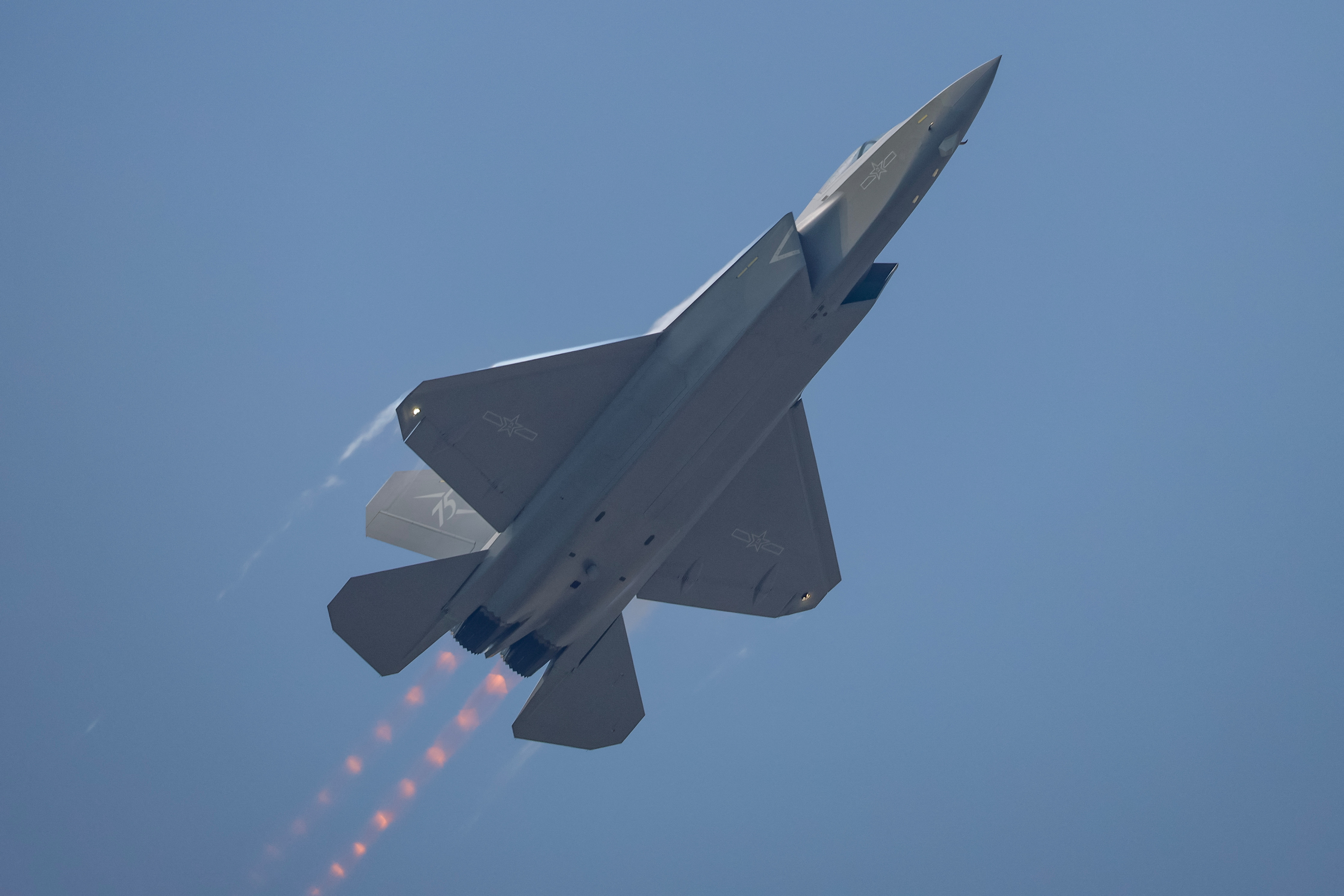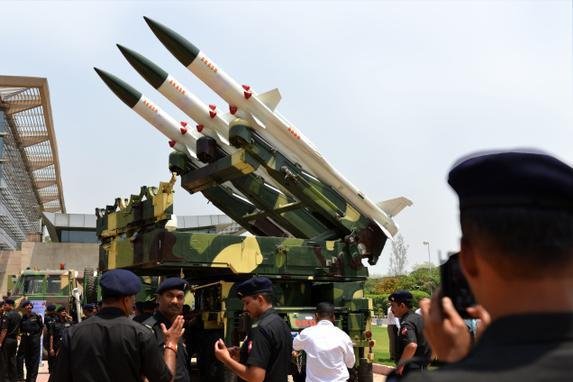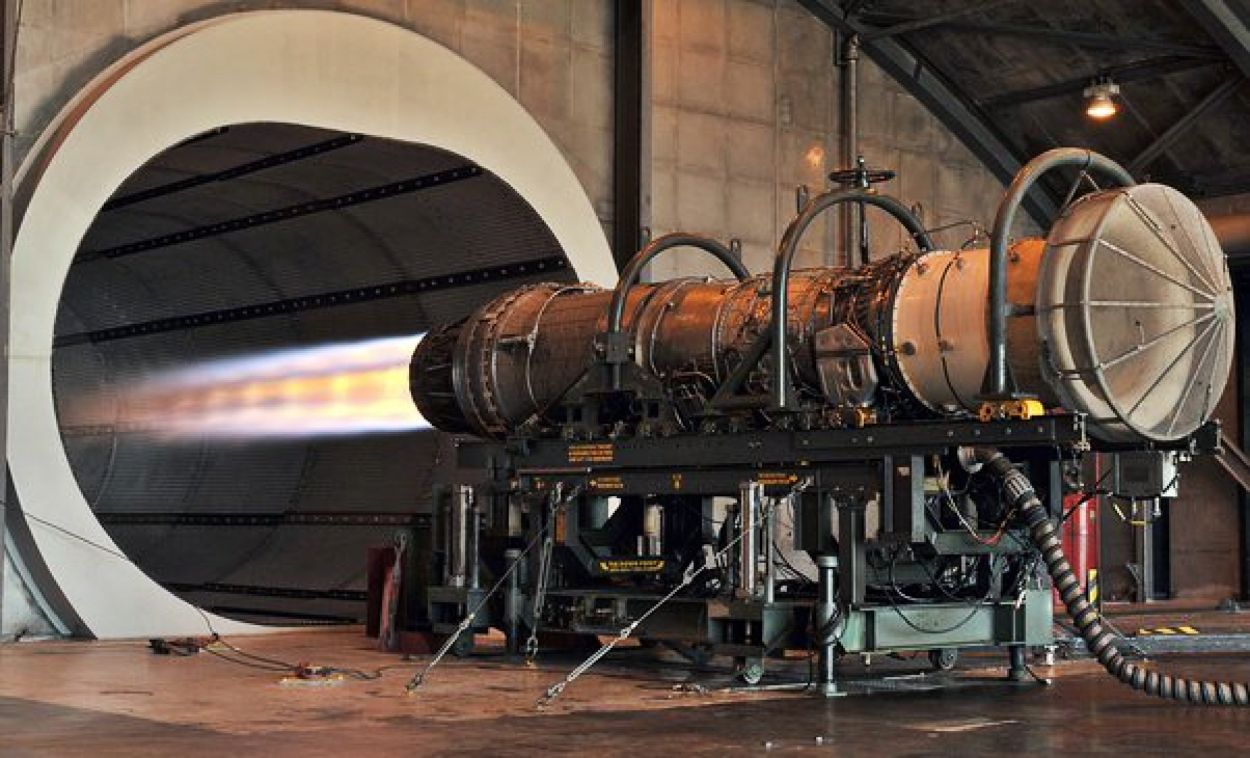SOURCE: AFI


China’s aerospace industry has faced a steep decline in fighter jet exports in recent years, with Pakistan emerging as the sole exception, procuring nearly 200 JF-17 Thunder jets and 20 J-10CE fighters. As global demand for Chinese combat aircraft wanes against dominant players like Russia, South Korea, and the United States, China is now fast-tracking the supply of its fifth-generation J-35A stealth fighter to Pakistan, aiming to revitalize its export market and establish a foothold in the competitive global arms trade.
The JF-17, co-developed by China’s Chengdu Aircraft Corporation (CAC) and Pakistan’s Aeronautical Complex, has been a cornerstone of Pakistan’s air force modernization, with nearly 200 units delivered or on order. The J-10CE, an export variant of China’s J-10C multirole fighter, has also found a buyer in Pakistan, with 20 jets acquired to bolster its air combat capabilities. However, beyond Pakistan, China has struggled to secure significant export deals, as countries remain skeptical of the performance and reliability of Chinese jets compared to established Western and Russian platforms like the F-16, Su-30, or KAI T-50.
Continue readingSOURCE: AFI


In a landmark demonstration of its advanced combat capabilities, the Indian Air Force (IAF) has released a video showcasing the Boeing AH-64E Apache attack helicopter test-firing the Air-to-Air Stinger (ATAS) missile, marking the first public display of this capability.
This milestone, highlighted in posts on X on May 20, 2025, underscores the Apache’s versatility in engaging not only ground targets but also aerial threats, including hostile helicopters, gunships, Medium-Altitude Long-Endurance (MALE) Unmanned Aerial Vehicles (UAVs), and Unmanned Combat Aerial Vehicles (UCAVs). The integration of the ATAS Stinger enhances the IAF’s air defence arsenal, positioning the Apache as a multi-role platform capable of dominating both air and ground domains along India’s volatile borders.
Continue readingSOURCE: IDRW.ORG


The Indian Army’s formidable T-90 ‘Bhishma’ tanks, a mainstay of its armored divisions, have received a game-changing upgrade that allows them to operate underwater for up to an hour. The Defence Research and Development Organisation (DRDO) has developed advanced equipment to keep tank crews operational even when fully submerged, significantly enhancing the tanks’ ability to navigate rivers along India’s borders with Pakistan and China.
With over 1,100 Russian-made T-90 tanks in active service, these main battle tanks form the backbone of India’s armored forces. The country’s riverine terrain, particularly along its northern and western borders, poses a challenge for tank operations during military maneuvers. While the T-90 is designed to withstand water exposure, the primary concern has been the safety and functionality of the crew—typically four to five members—when submerged.
Continue readingSOURCE: IDRW.ORG


In a significant stride for India’s aerospace and defense sector, Flying Wedge Defence & Aerospace has showcased a cutting-edge prototype of an Unmanned Combat Aerial Vehicle (UCAV) at a recent event. Dubbed the “Autonomous Aerial Aircraft,” this prototype bears a striking resemblance to SR-UAV (Surveillance and Reconnaissance Unmanned Aerial Vehicle) class systems, signaling a promising advancement in indigenous defense technology.
The unveiling took place at an exhibition aligned with the “Make in India” initiative, in collaboration with Suhas Tejaskanda, as indicated by the event branding. The prototype was displayed at Flying Wedge’s facility located at Bengaluru, Karnataka . The sleek, stealth-inspired design of the UCAV, with its angular lines and matte black finish, suggests a focus on low-observability and high maneuverability—key traits for modern combat drones.
Continue readingSOURCE: AFI


In a remarkable display of tactical ingenuity, the Indian Air Force (IAF) has successfully employed decoy drones, including the Banshee Jet 80+ Uncrewed Aerial Vehicle (UAV), to deceive Pakistani air defence systems along the Line of Control (LoC). Pakistani sources recently confirmed that debris from these drones, shot down by their air defence units, fell inside Pakistan, revealing the IAF’s use of advanced decoy tactics. Equipped with specialized payloads designed to mimic the radar and electronic signatures of IAF fighter jets like the Su-30 MKI and MiG-29UPG, these drones lured Pakistani air defence positions into revealing their locations, showcasing India’s growing sophistication in modern warfare.
The Banshee Jet 80+, developed by QinetiQ, is a dual-jet training target UAV designed for Threat Representation and military operational training. Fitted with twin 40 kg thrust gas turbine engines, it boasts an impressive static thrust of 80 kg, enabling speeds up to 200 m/s (approximately 720 km/h) in straight and level flight under International Standard Atmosphere (ISA) conditions. With an auxiliary fuel tank, the drone achieves a mission endurance of over 45 minutes, combining speed with stamina.
Continue readingSOURCE: AFI


India’s indigenous air defense systems, such as the Akash Surface-to-Air Missile (SAM) and the Medium-Range Surface-to-Air Missile (MR-SAM), have emerged as critical components of the country’s multi-layered air defense architecture. Developed by the Defence Research and Development Organisation (DRDO) in collaboration with Bharat Dynamics Limited (BDL) and Bharat Electronics Limited (BEL), these systems have demonstrated significant capabilities in recent combat scenarios, particularly during Operation Sindoor in May 2025.
However, when compared to Israeli and American air defense systems like the Iron Dome, David’s Sling, and the Patriot, questions arise about their relative effectiveness, especially in handling saturated drone and missile attacks. This article critically examines the performance of India’s indigenous systems, arguing that while they may not surpass their Israeli and American counterparts in all aspects, they have shown comparable or superior accuracy and resilience in specific combat scenarios, particularly against saturated attacks.
Continue readingSOURCE: AFI


In a significant enhancement to its air defence capabilities, the Indian Army has integrated the Russian-made 9K38 Igla-S (SA-24 Grinch) man-portable air defence system (MANPADS) with the indigenously developed Rajak Thermal Weapon Sight-Cooled (TWC) from Tata Advanced Systems Limited (TASL).
With over 150 Rajak TWC systems delivered to the Indian Army, this combination strengthens the force’s ability to counter low-flying aerial threats, including drones, helicopters, and fighter jets, particularly in challenging low-light and nighttime conditions. This development, showcased at Aero India 2025, underscores India’s push for self-reliance in defence technology under the “Aatmanirbhar Bharat” initiative while leveraging strategic partnerships with Russia.
Continue readingSOURCE: AFI


The Defence Research and Development Organisation (DRDO) is set to make a significant impact at the Paris Air Show 2025, one of the world’s premier aerospace and defence exhibitions. With a robust lineup of indigenous technologies, DRDO will highlight India’s growing prowess in defence innovation, showcasing advanced systems such as the Airborne Early Warning and Control (AEW&C), HAL Tejas Mk-2, Astra, BrahMos, Pralay, Varunastra, Rudram-I, and more. This display underscores India’s commitment to self-reliance under the “Aatmanirbhar Bharat” initiative and its ambition to emerge as a global leader in defence technology.
The Paris Air Show, scheduled for June 2025 at Le Bourget, France, will serve as a global stage for DRDO to demonstrate its technological advancements across multiple domains. The following systems are among the highlights expected to draw significant attention:
Continue readingSOURCE: AFI


Bollywood’s highly anticipated action sequel War 2, starring Hrithik Roshan and Ayan Mukherji, has made waves with its high-octane trailer, but one particular scene featuring a B-2 Spirit stealth bomber has left netizens in stitches—and not for the reasons the filmmakers might have hoped.
The trailer showcases a dramatic sequence where a B-2 Spirit, the iconic American stealth bomber known for its flying-wing design, is depicted deploying a team of commandos mid-flight. However, the absurdity lies in the execution: the commandos are shown being dropped from the aircraft’s internal weapons bay, parachuting down toward a commercial airliner flying below, presumably to take control of it. The scene, set against a picturesque sunset, aims for intensity but has instead become fodder for online ridicule.
Continue readingSOURCE: RAUNAK KUNDE / NEWS BEAT / IDRW.ORG


In a significant leap for India’s defense technology landscape, the Bengaluru-based Aeronautical Development Establishment (ADE), a premier laboratory under the Defence Research and Development Organisation (DRDO), is developing a groundbreaking kamikaze drone variant codenamed SWiFT-K. According to aerospace journalist Anantha Krishnan M, this platform, developed in partnership with Indian industry, marks India’s first foray into kamikaze drones, designed to operate at 0.6 Mach with autonomous high-speed stealth capabilities.
The SWiFT-K project underscores India’s push towards self-reliance in defense innovation, particularly in countering advanced air defense systems, and highlights the growing role of indigenous R&D in shaping the future of warfare.
Continue readingSOURCE: RAUNAK KUNDE / NEWS BEAT / IDRW.ORG


In a significant capability enhancement for its frontline fighter fleet, the Indian Air Force (IAF) has begun arming its MiG-29UPG and Su-30MKI aircraft with the latest Russian-origin RVV-SD (Product 170-1) beyond-visual-range (BVR) air-to-air missiles. These new-generation missiles are a major upgrade over the legacy R-77 (RVV-AE) missiles, which have been widely used but are now considered technologically outdated.
The RVV-SD features cutting-edge multichannel homing systems and incorporates the latest digital technologies, advanced materials, and high-performance components, enabling it to outperform previous models across multiple parameters. Key improvements include extended range, improved accuracy and target acquisition probability, greater resistance to jamming, and the ability to operate in all-weather, all-climate conditions—day or night.
Continue readingSOURCE: RAUNAK KUNDE / NEWS BEAT / IDRW.ORG


In a significant step toward self-reliance in defence technology, Chennai-based Zuppa Geo Navigation Technologies has received field-level validation from the Indian Army for its Ajeet Mini drone. This micro-category surveillance drone, designed for tactical reconnaissance missions, underwent rigorous trials by a Mountain Brigade in high-altitude terrain earlier this week, meeting key performance parameters and earning the Army’s nod. The development, announced on May 11, 2025, marks a potential turning point in India’s push to build a sovereign defence ecosystem and reduce reliance on foreign imports.
The Ajeet Mini, a compact unmanned aerial vehicle (UAV), is built around Zuppa’s proprietary patented autopilot system. It features a fully indigenous cyber-physical stack, including in-house firmware, command protocols, and ground control software. “We’ve developed the entire stack ourselves—hardware, software, structural components, and the control systems,” said Sai Pattabiram, founder of Zuppa. The drone’s validation followed field trials that demonstrated its effectiveness in challenging environments, a critical requirement for operations along India’s rugged borders.
Continue readingSOURCE: AFI


In a compelling discussion on Republic TV, Mr. Baba Kalyani, Chairman and Managing Director of Bharat Forge, emphasized the Indian industry’s commitment to investing in cutting-edge technology and developing advanced weapon platforms. He underscored the critical need for industry consortia to drive the development of indigenous aero engines, stating, “Indian Industry committed to invest in #technology and developing advanced weapon platforms.
Industry Consortia, a must, to develop #MadeinIndia Aero Engines.” This bold vision, articulated on a prominent national platform, highlights the strategic importance of self-reliance in India’s defense sector, particularly in the high-stakes domain of aero engine technology. As India aims to bolster its aerospace capabilities amid escalating regional tensions, Kalyani’s call for collaborative innovation signals a transformative shift in the country’s defense industrial ecosystem.
Continue readingSOURCE: AFI


In the complex arena of global geopolitics and defense procurement, narratives can be as potent as weapons. Recent reports from Russian Times (RT), a state-backed Russian media outlet, have stirred controversy by amplifying unverified claims about the French-made Rafale fighter jet’s alleged poor performance in a supposed India-Pakistan aerial clash.
These reports, which align closely with Pakistani narratives, have fueled doubts about Indonesia’s $8.1 billion deal to procure 42 Rafale jets from France’s Dassault Aviation. Simultaneously, RT has been promoting Russia’s Su-57E, a fifth-generation stealth fighter, as a superior alternative for nations like India and potentially Indonesia. This raises questions about RT’s motives: is it a neutral observer or a strategic player pushing Russian interests under the guise of journalism?
Continue readingSOURCE: AFI


On May 19, 2025, the Indian Army Air Defense (AD) showcased its vigilance and precision by successfully intercepting and shooting down a Turkish-made drone sent by Pakistan. The drone, which bore the provocative message “From Janbazan-e-Murid with love,” was detected crossing into Indian territory, prompting a swift response from the Army’s air defense units.
The Indian Army acted decisively, neutralizing the unmanned aerial vehicle (UAV) before it could carry out any potential threats. Upon inspection, the wreckage revealed that the drone was carrying explosives, indicating a possible intent for a hostile operation. The Army’s bomb disposal teams safely removed the explosives, averting any danger to personnel or infrastructure.
Continue reading